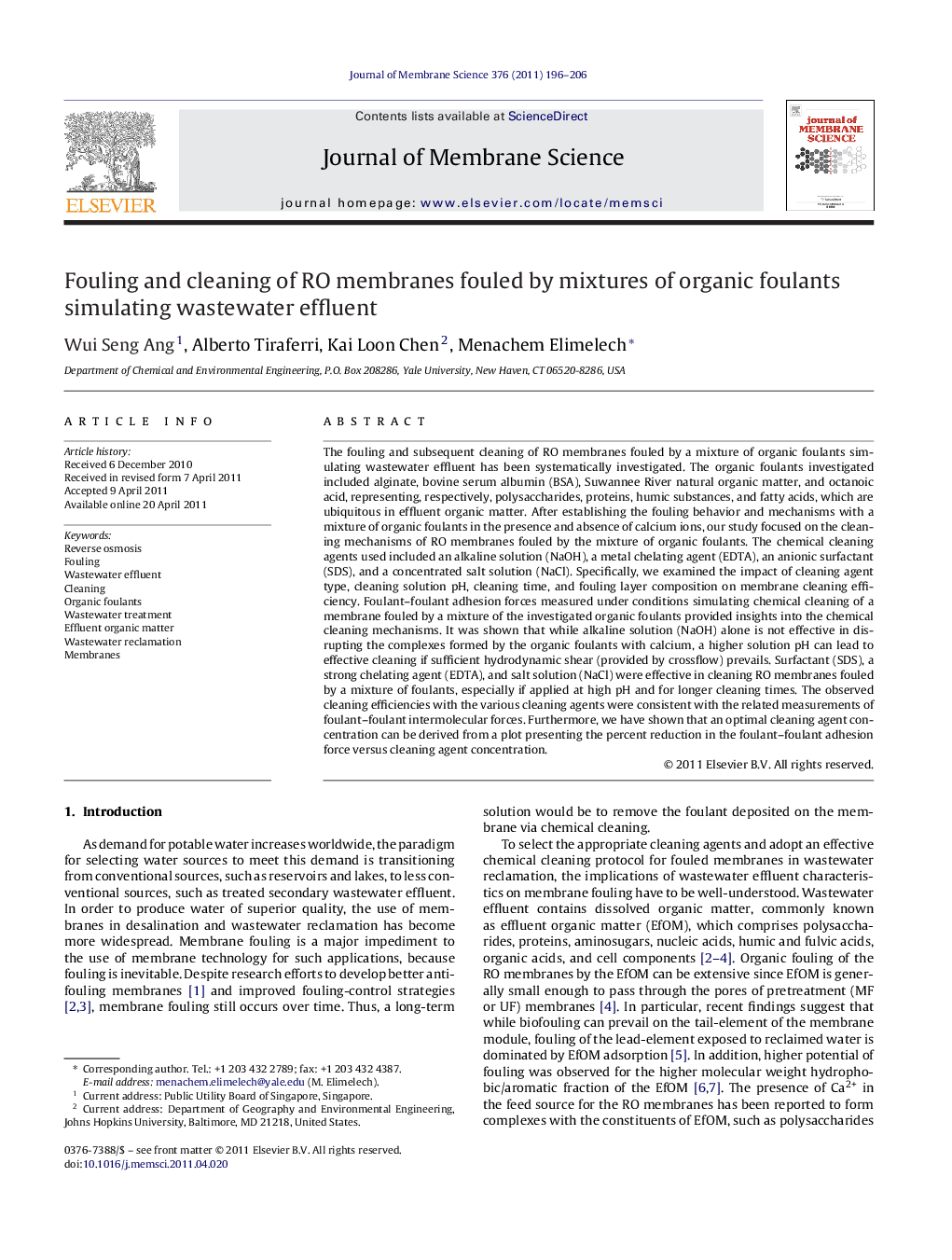| کد مقاله | کد نشریه | سال انتشار | مقاله انگلیسی | نسخه تمام متن |
|---|---|---|---|---|
| 635726 | 1456103 | 2011 | 11 صفحه PDF | دانلود رایگان |

The fouling and subsequent cleaning of RO membranes fouled by a mixture of organic foulants simulating wastewater effluent has been systematically investigated. The organic foulants investigated included alginate, bovine serum albumin (BSA), Suwannee River natural organic matter, and octanoic acid, representing, respectively, polysaccharides, proteins, humic substances, and fatty acids, which are ubiquitous in effluent organic matter. After establishing the fouling behavior and mechanisms with a mixture of organic foulants in the presence and absence of calcium ions, our study focused on the cleaning mechanisms of RO membranes fouled by the mixture of organic foulants. The chemical cleaning agents used included an alkaline solution (NaOH), a metal chelating agent (EDTA), an anionic surfactant (SDS), and a concentrated salt solution (NaCl). Specifically, we examined the impact of cleaning agent type, cleaning solution pH, cleaning time, and fouling layer composition on membrane cleaning efficiency. Foulant–foulant adhesion forces measured under conditions simulating chemical cleaning of a membrane fouled by a mixture of the investigated organic foulants provided insights into the chemical cleaning mechanisms. It was shown that while alkaline solution (NaOH) alone is not effective in disrupting the complexes formed by the organic foulants with calcium, a higher solution pH can lead to effective cleaning if sufficient hydrodynamic shear (provided by crossflow) prevails. Surfactant (SDS), a strong chelating agent (EDTA), and salt solution (NaCl) were effective in cleaning RO membranes fouled by a mixture of foulants, especially if applied at high pH and for longer cleaning times. The observed cleaning efficiencies with the various cleaning agents were consistent with the related measurements of foulant–foulant intermolecular forces. Furthermore, we have shown that an optimal cleaning agent concentration can be derived from a plot presenting the percent reduction in the foulant–foulant adhesion force versus cleaning agent concentration.
Figure optionsDownload high-quality image (191 K)Download as PowerPoint slideHighlights
► RO fouling by a mixture of foulants simulating EfOM is more severe if calcium is present.
► The alginate concentration in the mixture controls the fouling behavior.
► Larger amounts of alginate relate to less compact fouling layers, more easily cleanable.
► NaCl, SDS, and EDTA are effective cleaning agents, especially at high pH.
► Optimal agent concentrations can be derived if foulant–foulant adhesion forces are known.
Journal: Journal of Membrane Science - Volume 376, Issues 1–2, 1 July 2011, Pages 196–206